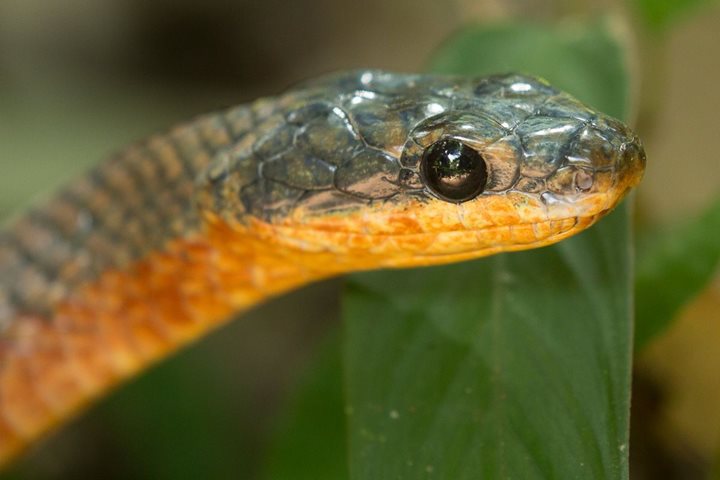On our second full day aboard National Geographic Sea Lion, we awoke as the vessel anchored off Islas Bona and Otoque—two small islands in the Gulf of Panama famous as nesting sites for boobies, frigatebirds, pelicans, and other seabirds. Passengers eagerly boarded our expedition landing craft for journeys around the island. Motor drives whirred and shutters clicked as thousands of birds soared overhead. Guests thrilled to close-up views of blue-footed boobies, including a young chick almost within fingertip reach; and of male magnificent frigatebirds proclaiming their potential prowess as mates by inflating their blood-red gular sacs, all the better to impress females soaring overhead like kites on invisible strings.
Lunch aboard National Geographic Sea Lion was followed by the “global market”—offering for sale such treasures as exquisite Kuna molas and Embera-Wounaan baskets—as we repositioned to Isla Iguana, off Panama’s Azuero Peninsula. En route, guest speaker National Geographic author/photographer Christopher P. Baker offered an engaging illustrated presentation: “Panama—A Diverse Nation.” Upon arriving at Isla Iguana, high sea swells made expedition landing craft landings unsafe; we thus aborted our visit. Guests were thus able to enjoy more lounge time aboard as we cruised for our next destination—Isla Coiba.
We concluded our early evening social hour with a recap by naturalist guides Jeffery Muñoz, who offered photo composition tips, and Maguil Céspedes, who provided an entertaining synopsis on the life of iguanas. Expedition leader Christian Moreno then briefed guests about our much-anticipated visit tomorrow to Coiba National Park.
In all, it had proved another fantastic day aboard National Geographic Sea Lion.
- Daily Expedition Reports
- 05 Jan 2015
Bona and Otoque Islands, 1/5/2015, National Geographic Sea Lion
- Aboard the National Geographic Sea Lion
- Costa Rica, Panama & Colombia







